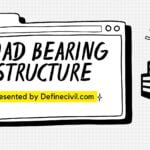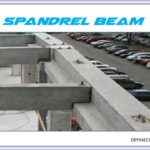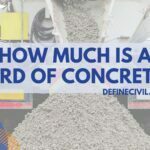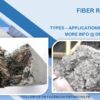A median in a road is an area that separates incoming traffic from traffic going in the same direction. Road median is commonly used where there are separate lanes traveling in opposite directions. So, the road median converts a “two-way” movement into a “one-way” movement. It also acts as an area for cars to U-turn and enters or exits the flow of traffic. It also provides space for landscaping and other aesthetic features that can beautify roadways.
There are different types of medians commonly used in road construction, each with their own advantages and disadvantages depending on the situation. Here are the three most common types of medians and what you need to know about them if you plan to build one for your project.
What is a median in a road?
In most of the times, median is a physical barrier. But in some cases, due to space constraints, an extra lane can also act as a median. Cateyes can be used to divide one side of the road from the other and separates oncoming traffic. It’s an important feature to have if there are turns or crossroads along your route, but they aren’t always necessary depending on the amount of traffic flow in the area. To ensure safe driving, you need to know what types of medians commonly used in road construction.
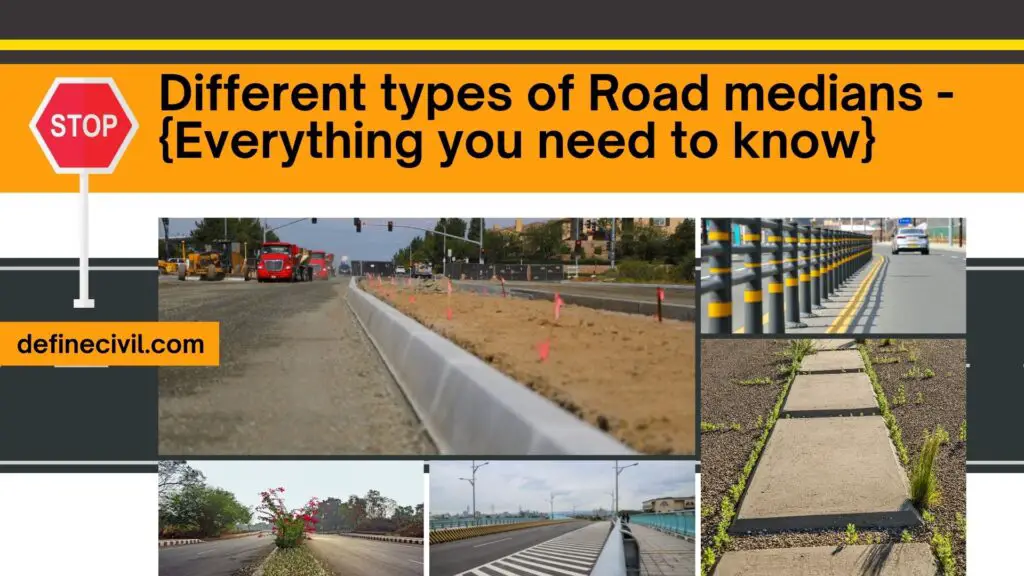
Benefits of a median
A median on a road serves several important functions. Let’s now see some benefits of incorporating a median in a road design:
- First, it allows drivers to enter and exit highways or roads with less interruption. For example in case of a U-turn, the extra space helps drivers to easily maneuver through the turn. This can be particularly beneficial for large semi-trucks that need lots of space to maneuver into and out of traffic.
- Second, medians create an extra barrier between opposing lanes of traffic, further reducing incidences of head-on collisions.
- Third, having parking spaces and wide turnouts along medians creates additional opportunities for drivers to safely exit onto off-ramps without impeding traffic flow or risking collision.
- A median offers an opportunity for the designers to incorporate vegetation and landscaping features to beautify roads. It not only compensates for the loss of green vegetation as a result of road construction. It also give a tranquil feeling to drivers while traveling that reduces the driving stress and fatigue.
- Medians also provide a refuge to the pedestrians while crossing roads.
Also Read: Road Drainage- Purpose – function-Types
Types of Median
There’re three common types of road medians, based on materials:
- Paint Lines (Or A Painted Island)
- Concrete Barriers
- Curbs
All the types of medians can be used in conjunction with each other or on their own depending on your needs. Your selection for types of median depends on factors like space availability, type of traffic, width of median required, and type of intersection. Anyhow, you must go for a median that offers maximum safety for both drivers and pedestrians.
Also Read: Rutting in Roads – Definition – Repair – Meaning – Causes
Paint lines as median
A median can be of a paint line marked with road studs that separates two lanes of traffic that run parallel to each other. Such a type of median is also sometimes referred to as median strip. Paint lines as medians are commonly used when space is not enough and the road is an inner city and not a major highway.
Concrete Barriers or NJ Barriers
One popular median barrier type is called Jersey barriers. These barriers, made of heavy-duty reinforced concrete, are designed to stop vehicles and other hazards from crossing over into oncoming traffic.
In many cases, they’re painted bright yellow so they’re more visible to drivers. Also known as safety bollards or Jersey pylons, these partitions may be used in conjunction with standard concrete curbs or along roadsides with no other line demarcation.
You’ll find them used at construction sites and road construction zones where cars will be driving at low speeds and where there’s not much room for error or accidents.
Curbs
Curb stones are commonly used as road medians, and these curb stones have to withstand several different weather elements. Curb stones median should be made from durable materials that can withstand cold winters, hot summers, and intense rain.
Also Read: Different Modes of Tranportation
These curbstones are typically set 4 inches below ground level on top of mortar with gravel at its base. To ensure curbs continue to look neat and clean after years of traffic wear and tear, many communities choose to restore their curbs every 20–30 years.
Types of median based on design
Based on the design of median, we can classify it to:
- Raised
- Flushed
- Depressed
Raised
A raised median is also known as an island or a median barrier. Raised medians are used to separate opposing lanes of traffic (usually one lane going each direction). Traffic engineers use raised medians for safety reasons, by creating barriers for drivers.
Raised medians are also common to narrow roadways so that only one lane of traffic can pass through at a time, as well as to create additional turn lanes at intersections. Since they effectively change roadways from two lanes into one, they need to be delineated with painted lines that indicate which side of it you must stay on.
Also Read: Mistakes to Avoid When Transporting Construction Equipment and Goods
Enhancing Road Safety with Vehicle Activated Speed Signs (VAS) on Medians
Integrating Vehicle Activated Speed Signs (VAS) on road medians significantly improves traffic safety by providing real-time, high-visibility warnings to drivers exceeding speed limits. These signs can be vehicle activated, meaning they detect approaching vehicles and trigger dynamic messaging to alert speeding drivers while reinforcing safe driving habits. Positioned at the center of the roadway, VAS ensures maximum visibility for all lanes, making them especially effective in speed reduction zones, school areas, and residential streets. By leveraging vehicle detection technology, these signs display speed indicators, cautionary messages, or appreciation signals, contributing to safer, more controlled traffic flow and encouraging better compliance with speed regulations.
Flushed
The other common type of median found in roads is called a flush median. This type of median has no physical barrier, but instead uses plantings to divide traffic. It can be used at two-way intersections or at four-way stops. Flush medians are normally not longer. On long stretches of road with wide medians, such as freeways and highways, traffic may switch lanes to pass through flush medians. So, they’re not recommended on highways or expressways.
Depressed
Depressed median is not that common as a raised median. However, it still acts physical barrier separator traffic lanes. A depressed median is a bit low in level than a road center. Hence, it can be used to collect storm or rainwater.
Also Read: Rigid Pavement – Difference between Rigid vs Flexible Pavement
The bottom line
A median can help prevent accidents by forcing drivers to slow down and pay attention when they cross it. For example, if you’re turning onto a road and hit a median at high speed, you may not be hurt by the impact, but you’ll definitely be dazed for some time. This could save your life if there’s fast-moving traffic coming toward you on either side.

